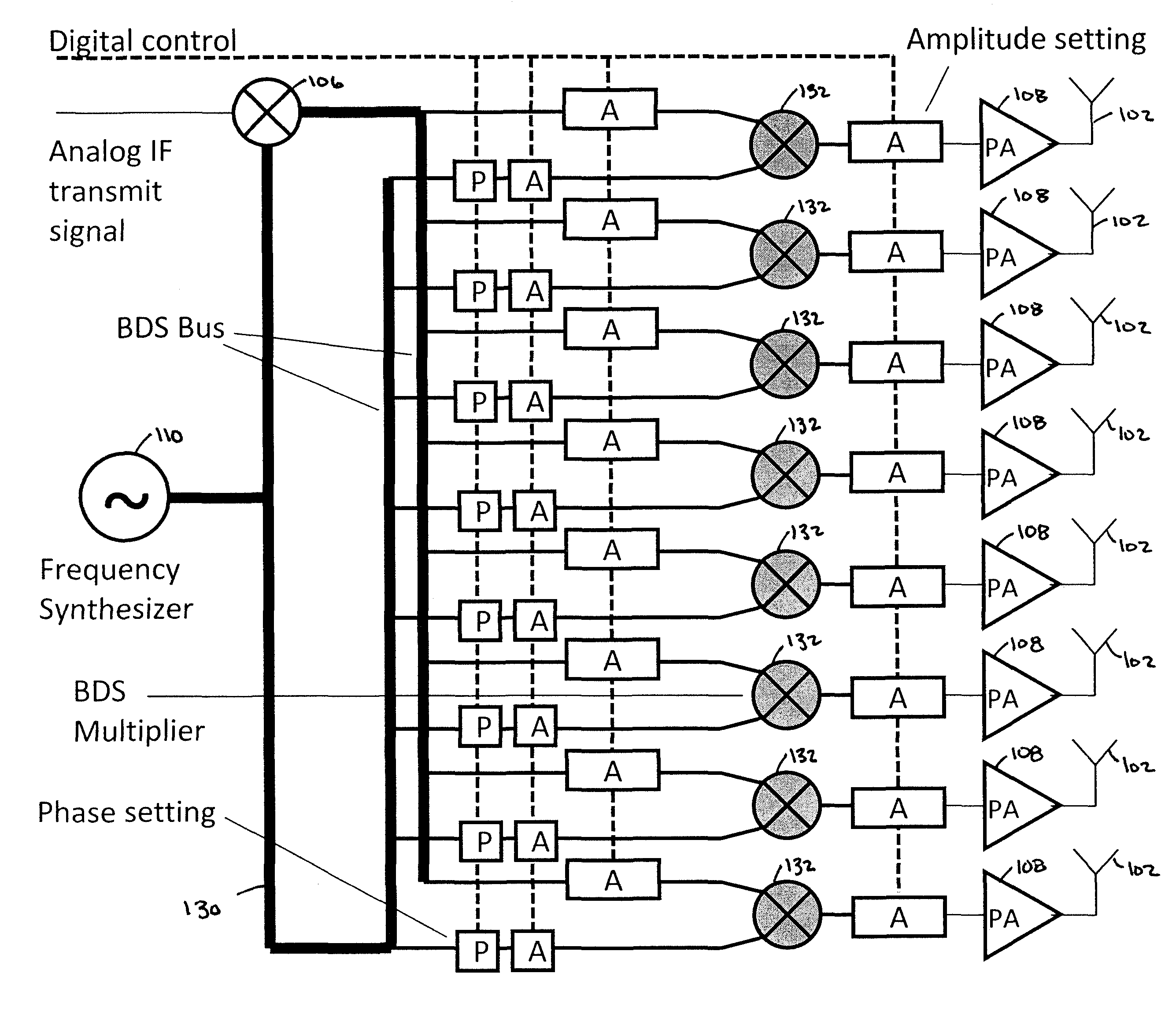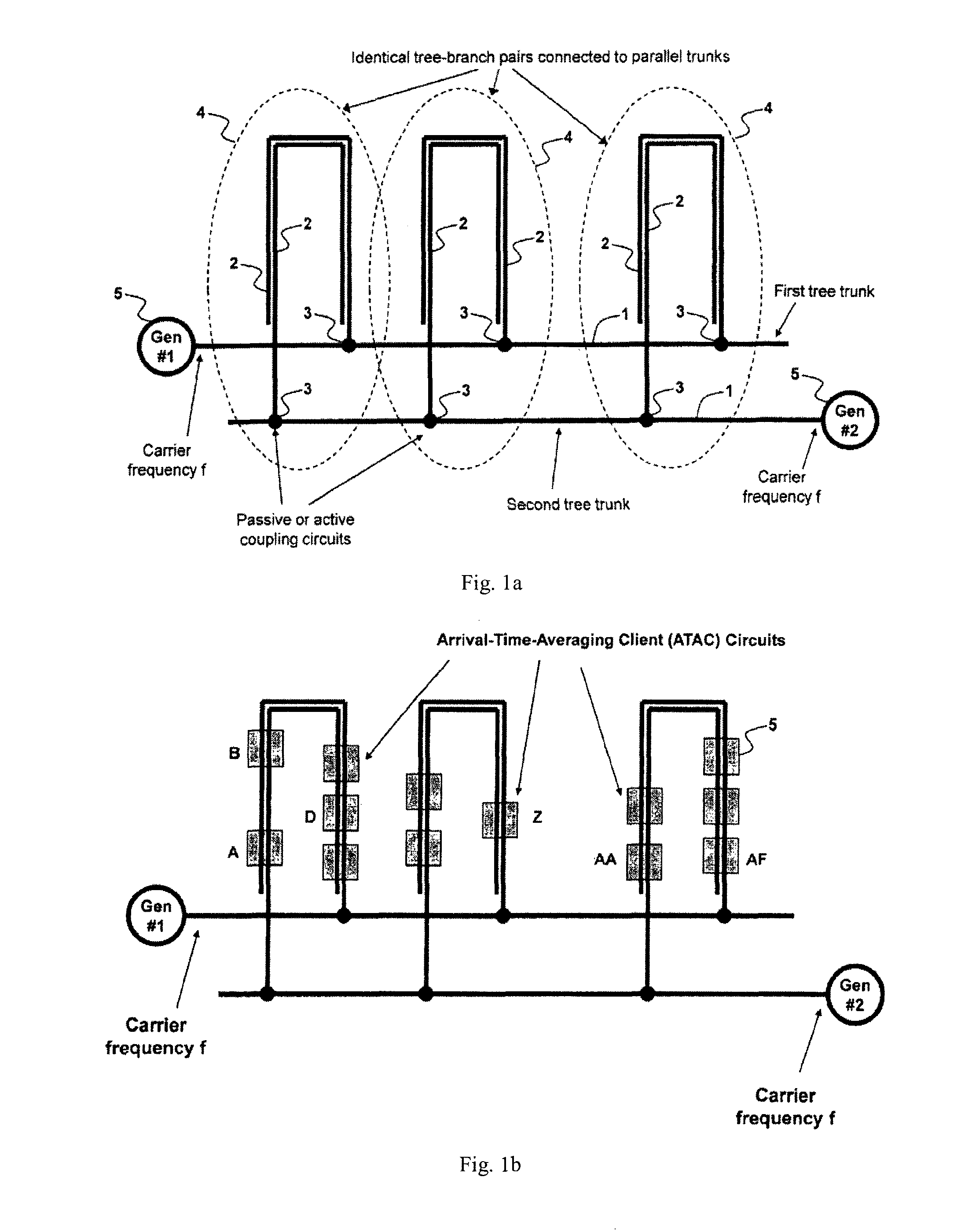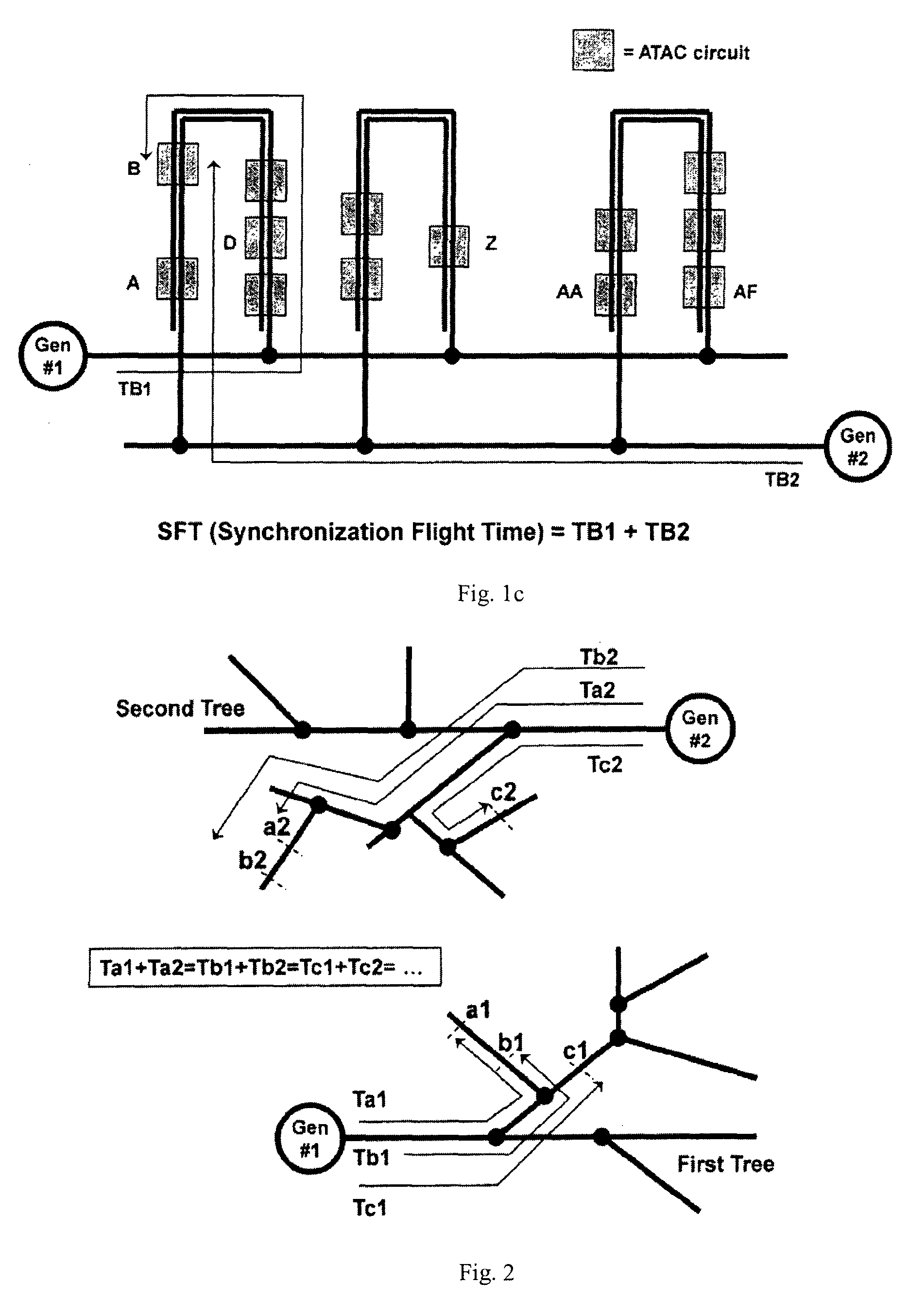Low cost, active antenna arrays
a low-cost, active technology, applied in the field of active arrays, can solve the problems of high loss limiting system performance, and high cost of corporate feed and programmable phase shifters
- Summary
- Abstract
- Description
- Claims
- Application Information
AI Technical Summary
Benefits of technology
Problems solved by technology
Method used
Image
Examples
Embodiment Construction
[0065]Before presenting detailed descriptions of various embodiments of the invention, it is useful to first understand the operation of the bidirectional signal distribution concept which will be used in those various embodiments.
[0066]FIG. 1(a) depicts a schematic diagram of two independent tree networks, each consisting of a tree trunk 1 and tree branches 2. We will refer to this below generally as a BDS (bidirectional signaling) bus. The tree trunk and the tree branches of each of the tree networks are properly terminated signal transmission lines (termination circuits are not shown in FIG. 1(a) for simplicity), such as electrical microstrip lines, optical wave-guides, sound propagating guides, or simple electrical traces. The difference between trunk 1 and branches 2 is not in substance but rather in name, based on the relative position of the signal transmission lines (TL) with respect to the tree network input port. Trunk 1 is defined as the signal transmission line connected...
PUM
 Login to View More
Login to View More Abstract
Description
Claims
Application Information
 Login to View More
Login to View More - R&D
- Intellectual Property
- Life Sciences
- Materials
- Tech Scout
- Unparalleled Data Quality
- Higher Quality Content
- 60% Fewer Hallucinations
Browse by: Latest US Patents, China's latest patents, Technical Efficacy Thesaurus, Application Domain, Technology Topic, Popular Technical Reports.
© 2025 PatSnap. All rights reserved.Legal|Privacy policy|Modern Slavery Act Transparency Statement|Sitemap|About US| Contact US: help@patsnap.com



